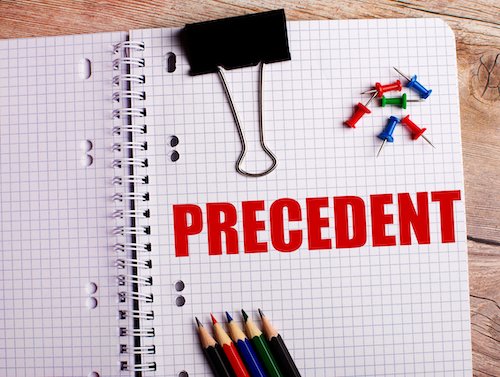“In rejecting the Board’s evaluation, the CAFC mentioned that ‘it’s useful to look to the result of the tribunal’s evaluation’ in an effort to decide whether or not declare building has taken place.”
The U.S. Courtroom of Appeals for the Federal Circuit (CAFC) today issued a precedential decision vacating and remanding a Patent Trial and Attraction Board (PTAB) resolution {that a} patent for a local weather management system was not confirmed unpatentable by Google LLC and Ecobee, Inc. In so doing, the court docket clarified tips on how to decide when a court docket or the PTAB has implicitly construed a declare.
The patent at subject is U.S. Patent No. 8,498,753. The PTAB explicitly said that it didn’t want to interact in specific declare building and that it didn’t construe any of the declare limitations. Nevertheless, it later concluded in reaching its resolution that the limitation in query “‘recites 5 distinct inputs upon which the time relies at the least partially’ and thus it ‘requires that every of these inputs be a definite element of the calculation of the ‘first time previous to mentioned goal time.’” It additional decided that “[t]right here is nothing within the asserted claims to counsel that one piece of information can be utilized to fulfill a number of inputs” and due to this fact rejected Google’s concept of unpatentability, which did “‘not use every of the 5 distinct inputs,’ however moderately double counted an enter such that it makes use of ‘a number of thermal efficiency values of mentioned construction’ to fulfill each inputs [i] and [iii].”
In rejecting the Board’s evaluation, the CAFC first mentioned that “it’s useful to look to the result of the tribunal’s evaluation” in an effort to decide whether or not declare building has taken place. The Board’s assertion that it was not partaking in declare building just isn’t dispositive as as to if declare building occurred, mentioned the court docket, and it agreed with Google’s argument on enchantment that the Board’s evaluation of the limitation in query amounted to assert building. “There may be nothing on the face of the declare to discern the scope and bounds of [the] inputs, e.g., whether or not one enter could also be calculated primarily based on one other enter, and whether or not they have to be distinct or could also be entwined,” wrote the CAFC. “To find out, because the Board did, that no enter could be primarily based partially on one other enter and that every enter have to be distinct, is to ascertain a restrict to the scope of the [1m] declare limitation.”
Moreover, the instances relied upon by the Board in its resolution associated to deciphering claims within the declare building context and the Board’s reliance on these instances was to find out the that means and scope of claims, which is a declare building inquiry, mentioned the court docket.
Turning as to if the PTAB’s building was then inaccurate, the CAFC discovered that it was, although it rejected Google’’s argument that it violated the Administrative Procedures Act (APA). The court docket discovered that Google had ample discover of the core subject posed by the Board’s building, particularly, “the scope and bounds of the 5 inputs,” as a result of the events had raised them all through the inter partes evaluation (IPR) continuing.
To find the development inaccurate, the CAFC mentioned that the specification helps a broader building of the related limitation and “comprises no restrictive language and doesn’t explicitly require that the declare inputs be separate.” The court docket finally agreed with Google’s proposed building and reversed the PTAB’s implicit building, vacating the Ultimate Written Determination and remanding for added proceedings underneath the right building.
Picture Supply: Deposit Images
Writer: len_dig@mail.ru
Picture ID: 417844404


